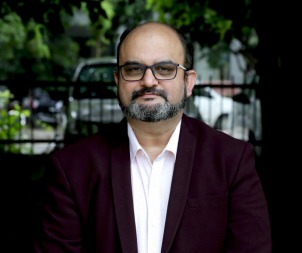
How the Rise of Consumerism is being powered by EMIs in fulfilling the Great Indian Millennial Dreams
Thanks to easier funding via affordable EMIs, consumer finance companies are fulfilling the dreams of millennial and other youthful cohorts, including those lacking credit history.
By Dr Samir Kapur
Millennials have a mind of their own and believe in achieving dreams in the here and now. If that means purchasing goods on EMIs (equated monthly instalments), the youth are game for it. This mindset is unlike that of previous generations, which believed in first saving and then buying – even if it took years.
No wonder small-ticket consumer loans and credit schemes are popular nowadays, driving up the sales of varied consumer durables. Thanks to this trend, consumer credit companies such as TVS Credit and Bajaj Finserv have been increasing the share of their offerings to these niche segments not covered by conventional lenders and NBFCs.
Small Ticket, Big Dreams
Market analysts agree that the changing mindsets of millennials and other youthful sections have stoked a spike in consumer loans. These are used to buy various gadgets, gizmos and goods, including mobile phones, consumer durables and small-ticket items on easy, no-cost EMIs via loans or credit cards.
Presently, collateralization of products is used by lenders to extend credit to even underserved and underbanked segments. For example, earlier lenders disbursed loans for purchasing homes, land, cars and other commodities. The product bought through a loan remains hypothecated (pledged as collateral security) to the lender. Smartphones being a proxy for fulfilling people’s aspirations to showcase their lifestyles, mobile phones are the latest style statement.
Thereby, owning a top-notch smartphone is perceived as a symbol of vanity. Capitalizing on such user behaviour, TVS Credit, Bajaj Finserv and others consumer goods lenders are collateralizing product loans to fast-forward the great Indian dream by upfront purchases with zero down payment EMIs. Collateralization of consumer products has made even expensive handsets such as Apple’s iPhone “affordable” for laypersons, becoming a symbol of vanity.
Currently, borrowers are taking small-ticket loans to fund personal consumption needs – a trend more popular among low-income families opting for loans of under Rs50,000. A report by CRIF India notes that in the last two financial years, loans disbursements of amounts below Rs50,000 surged five times.
As of March 2020, half the small loans were of Rs5,000 or less ticket size.[1] It’s this segment of youthful, low-income but tech-savvy consumers that fintech lenders are targeting. Typically, this cohort is ineligible for legacy lenders’ loans as they lack credit history or have limited credit records. Since such customers are considered high risk, traditional lenders give them the go-by. Here, demand is driven mainly by borrowers between 18 and 30 years and millennials.
RBI data released early last year indicated that consumer loans maintained momentum even when credit offtake in other segments was lacklustre. The country’s largest AI-enabled consumer lending platform, ZestMoney, noted in a report that it had seen more than 125% growth in EMI funding in 2019. Significantly, digital EMIs constitute a huge part of the present-day economy, recording a 2000% rise in new-to-credit customers hailing from tier 2 and tier 3 cities.[2]
Surging Sales via EMIs
E-commerce majors such as Amazon, Myntra, Flipkart, MakeMyTrip, Decathlon and Paytm, among others, have seen a substantial surge in online sales in the past year due to EMI financing schemes. Naturally, EMI adoption in 2019 rose by more than 84% in tier 1 cities, 140% in tier 2 towns and 145% in tier three zones. Due to this trend of greater EMI adoption, cash usage is falling, promoting a vibrant financial ecosystem propelling greater business growth for many new-age entities.
This trend towards consumerism through small-ticket borrowings is beneficial for the economy and the people. The former because it’s facilitating a faster bounce back from the downturn. The latter because it signals the desire and aspirations of the new generation, which believes in achieving their dreams in the present moment, not in the distant future.
For many sections, including women, this financial independence denotes a sense of empowerment. Moreover, with the country shifting steadily towards the digital economy, cash no more being king is a welcome development. The popularity of digital transactions also augurs well for revenue collections because a higher proportion of taxes are paid.
Be it people in India or the masses across Bharat, the popularity of e-commerce means a wide range of products can be ordered and received within days. Online orders through EMIs were particularly advantageous during the lockdown as the stringent social distancing restrictions in the early phase meant people couldn’t move out. Despite the severe slowdown during this period, sales of apparels, groceries, medications and other essentials kept the economy ticking to some extent.
Meanwhile, value-focused e-commerce portals such as Snapdeal ensured customers in non-metro cities could order products through easy EMI options without any processing fees. Likewise, fashion and apparels giant Myntra offered an array of online EMI options, including no-cost EMIs. As a result, consumers could buy premium or value-for-money items as per preference and purchasing power. Consequently, short-term debt is no longer a four-letter word like before. All it needs is fiscal discipline to pay the affordable instalments as per monthly schedules.
Furthermore, due to the ongoing pandemic, online purchases and EMI payments are swift, secure, safer and convenient for consumers without running the risk of in-store buying. The ZestMoney report reveals that while their average Indian consumer lacks access to conventional credit, the options from unconventional sources remain open due to Internet connectivity. No surprise then that 80% of their customers using EMI financing hail from tier 2 or tier 3 cities.
A spokesperson for a consumer credit company summed it up aptly by saying the firm strives to fulfill their customers’ “smallest dreams”, whether it is buying a smartphone or a vehicle. This is noteworthy because many new-to-credit consumers have no established credit behaviour or history, yet they are provided easy loans. Therein lies a significant tale about an emerging New India.
Dr Samir Kapur is a visiting faculty at various leading management institutes, he teaches consumer behaviour and marketing management


















